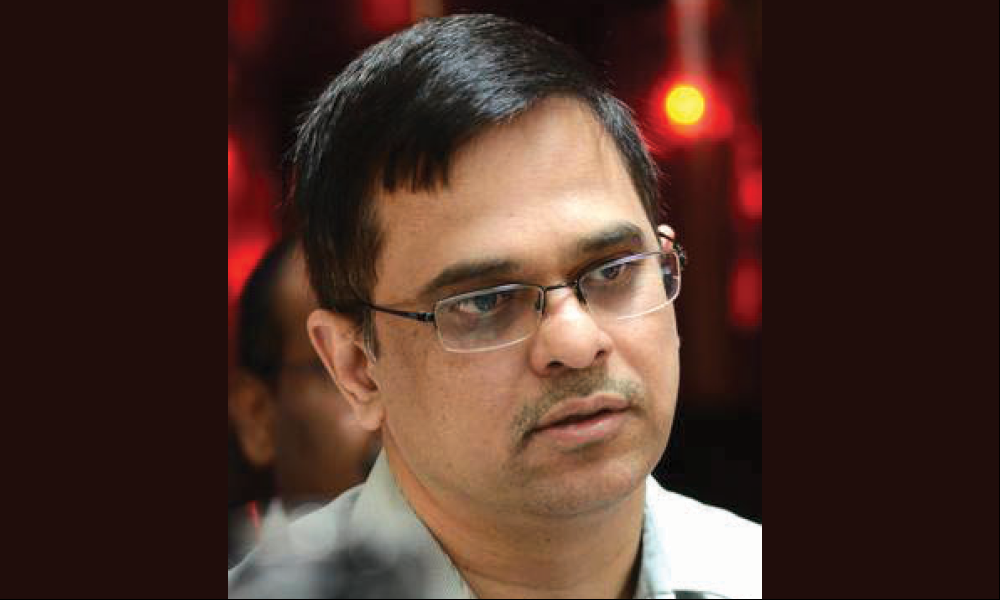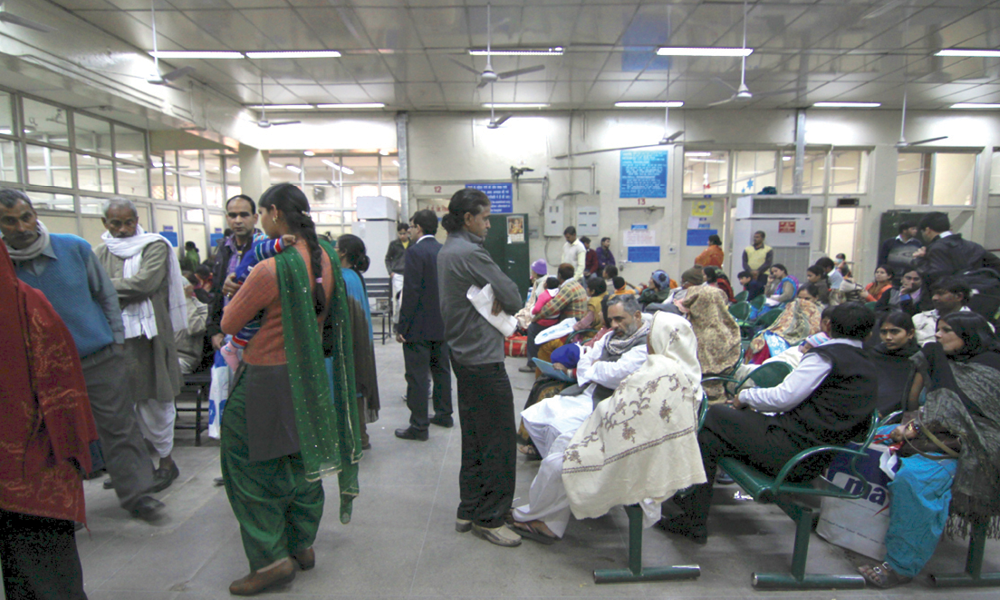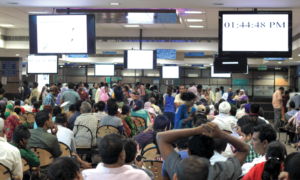
 The All India Institute of Medical Sciences (AIIMS) has undergone a transformation in providing a relatively far better experience than it was earlier known for among patients and for its related services, V Srinivas, the 1989-batch IAS officer, who served as the Deputy Director, Administration, AIIMS from December, 2014 to March, 2017, shares a case study with Elets News Network (ENN).
The All India Institute of Medical Sciences (AIIMS) has undergone a transformation in providing a relatively far better experience than it was earlier known for among patients and for its related services, V Srinivas, the 1989-batch IAS officer, who served as the Deputy Director, Administration, AIIMS from December, 2014 to March, 2017, shares a case study with Elets News Network (ENN).
 It was 3 am on a Tuesday on January 14, 2015, when Delhi recorded a minimum temperature of 5 degrees celsius. Khemraj and Mohanlal were waiting outside the Raj Kumari Amrit Kaur Out Patient Department (RAK OPD) at the All India Institute of Medical Sciences (AIIMS). Khemraj had arrived in Delhi from Bihar with his five-year-old son Mohanlal, braving the severe Delhi winter for medical consultations in the department of pediatrics. With great difficulty he could get accommodation at the Rajgarhia Vishram Sadan. He was told that he should reach RAK OPD by 3 am to stand in queue to seek an appointment the following day.
It was 3 am on a Tuesday on January 14, 2015, when Delhi recorded a minimum temperature of 5 degrees celsius. Khemraj and Mohanlal were waiting outside the Raj Kumari Amrit Kaur Out Patient Department (RAK OPD) at the All India Institute of Medical Sciences (AIIMS). Khemraj had arrived in Delhi from Bihar with his five-year-old son Mohanlal, braving the severe Delhi winter for medical consultations in the department of pediatrics. With great difficulty he could get accommodation at the Rajgarhia Vishram Sadan. He was told that he should reach RAK OPD by 3 am to stand in queue to seek an appointment the following day.

As they waited at the gates of the RAK OPD they noticed that they were being accompanied by several thousands of other patients. Consultations in AIIMS were not easy. Mohanlal was diagnosed with acute neuro-developmental disorders and the consultations were possible only in AIIMS. He had no idea where the department of pediatrics was and there was nobody to guide him. Still, he clung on in blind hope. He was jostled around to the registration area at 8.30 am when the RAK OPD gates finally opened. From there, he was jostled around again to the pediatrics department OPD at 10.30 am.
They waited outside to meet the clinicians of pediatric neurology. There were nearly 140 patients at each clinicians chamber on that particular day. Hours passed before they got their turn to meet the clinicians at 12.30 pm. The AIIMS pediatricians examined Mohanlal. He was advised to undergo CT scan and MRI scan for a clearer diagnosis. The consultation charges in AIIMS were Rs 300 per test as against Rs 30,000 per test charged outside. Affordable health care is not easily available in India.
Both of them had to stay back for two days more for their CT scans and MRI tests. Another long wait in queues for the next two days loomed. They underwent similar experience by standing early morning queues to get the CT scan and then the MRI done. The whole experience left them exhausted. Their second consultation was scheduled three days later. It was a tough experience for them. Following the diagnosis and prescription, they were asked to return a year later.

On January 31, 2016, they returned to AIIMS. Little could they believe that they could come to AIIMS at 8.30 am instead of 3 am and their consultations would be completed in two hours with doctors, who seemed more cheerful.
The AIIMS e-Hospital Project and the AIIMS OPD Transformation Project had transformed AIIMS into a patient- friendly hospital saving patients wait times, having electronic records, exit OPD counters and easier access to clinicians consultation rooms.
There were patient care coordinators and patient care managers to help them reach the pediatrics OPD. They could wait in a comfortable air-conditioned waiting space without being jostled around. They found their patient records were available online and consultation timings could be firmed up at the exit OPD counter. The transformation was unbelievable. Little did Khemraj and Mohanlal realised that they were now part of the first digital revolution in health care.
The Background
Rajkumari Amrit Kaur had founded AIIMS as the apex Medical Sciences University of India where the brightest doctors would pursue the trinity of goals of patient care, medical education and medical research. As the AIIMS brand got established and its fame spread far and wide, it attracted patients from all over India “ 35 lakh OPD patients in 2014-15 alone.
Receiving on an average 10,000 OPD patients per day, having 62 departments, 3,100 doctors, and 10,000 nurses, AIIMS represents the ultimate in Indias tertiary care. While the institute comprising highly driven professionals works with clockwork precision, the overwhelming patient flow proved impossible for a manual system to handle and required significant systemic changes in terms of improved digital practices and process re-engineering. Although AIIMS accorded highest priority to every patient, the patient journey was time consuming and exhausting.
AIIMS, UIDAI and DeiTY Collaborate for Reviving the Defunct E-Hospital Project in January 2015
 Patients were amazed to see the impact of the e-Hospital project which was the governments big initiative to create an electronic platform for large hospitals. Prior to January 2015, the implementation of the e-Hospital project was neither effective nor well coordinated. Significant policy interventions were necessary if the e-Hospital project was to be revived.
Patients were amazed to see the impact of the e-Hospital project which was the governments big initiative to create an electronic platform for large hospitals. Prior to January 2015, the implementation of the e-Hospital project was neither effective nor well coordinated. Significant policy interventions were necessary if the e-Hospital project was to be revived.
The first step in the Digital AIIMS project was the creation of an effective linkage between AIIMS, Unique Identification Authority of India (UIDAI) and the Department of Electronics and Information Technology (DeiTY). Ram Sewak Sharma had served as Director General UIDAI and was serving as Secretary, DeiTY. Sharma and V Srinivas, who was serving as the Deputy Director-Administration AIIMS, envisaged creation of an Aadhaar platform based unique health identification number for every patient visiting AIIMS. The patient could log into the AIIMS OPD Appointment System (ORS.gov.in) and submit a request for an appointment online using the Aadhaar number. The verification of the demographic details of the patient was based on one-time password which was sent to the mobile phone number of the patient registered in the Aadhar data base. The Unique Health Identifi cation Number gave an individual digital identity to every patient visiting AIIMS. The patient could use the UHID for his entire lifetime and every consultation visit was documented by the system.
The next significant step in the Digital AIIMS project was the strengthening of the AIIMS-DeiTY-NIC collaboration. Prof MC Misra, Director AIIMS, Sharma and Srinivas would convene meetings at AIIMS regularly to establish an effective tripartite collaboration. The e-Hospital project proceeding at the snails pace, suddenly gained significant momentum with the launch of Digital India Initiative. With the top administrative leadership involved, there was a new urgency in DeiTY, AIIMS and NIC for early completion of the software so that the Online Registration System could be established. This was followed by the collaboration between AIIMS and Pay Gov for creation of a payment portal. Every module of the e-Hospital project was taken up for implementation in a time bound manner.
The e-Hospital project necessitated transparency in OPD appointments. It also necessitated that the clinicians OPD diaries are placed in public domain. Clinicians who had very high patient loads were encouraged to adopt caps on the number of patients to ensure simplification.
AIIMS -TCS Collaboration for Process Re-Engineering in APRIL 2015
AIIMS is a very process driven organisation. There are registration forms, payment forms, consultation cards, MRI forms, CT scan forms and several slips that required to be fi lled. The AIIMS-TCS collaboration for the AIIMS OPD Transformation Project was conceptualised at ministerial level. N. Chandrasekaran, CEO of TCS and Girish Krishnamurthy, Senior Vice President of the company, visited AIIMS to identify the implementation modalities. They worked closely with Director of AIIMS Prof Misra and Srinivas. The approach was to facilitate faster registration; to build larger patient waiting areas; introduce new signages, screening at the entry point; employ patient care coordinators at the registration and consultation areas; and the rather unique exit OPD counters for all follow-up patients.
The First Digital Revolution in Health Care
In January 2016, OPD patients and attendants entered a new state-of-the-art Patient Registration Centre with 50 registration counters “ each one having a computer terminal equipped with the e-Hospital software. New cadres of officials “ nursing informatics specialists, patient care coordinators and data entry operators “ were introduced at AIIMS. Kiosks were set up at many places and the dashboards depicted the patient journey. They did not have to waste time in long queues to see clinicians. The patient care coordinators guided them to the pediatrics OPD within no time. The nursing informatics specialists gave them a plastic UHID card for future references.
The registration time was reduced to a mere 40 seconds for all new appointments with UHID numbers generated from the online registration system. Fast track queues were created, where the patients who had already registered themselves under the online registration system, could get their OPD cards and move quickly to the patient waiting areas. The entire approach was one of empathy and efficiency.
The most innovative feature of the AIIMS transformation model was the introduction of exit OPD counter. It enables to schedule next appointments along with all tests in an orderly manner. Patients thus had a systematised experience from the point of entry to the point of exit. They found the entire experience as very satisfying.
On August 15, 2016, Khemraj and Mohanlal heard Prime Minister Narendra Modi commending the AIIMS e-Hospital project for pan India replication in every major hospital.
Be a part of Elets Collaborative Initiatives. Join Us for Upcoming Events and explore business opportunities. Like us on Facebook , connect with us on LinkedIn and follow us on Twitter , Instagram.












